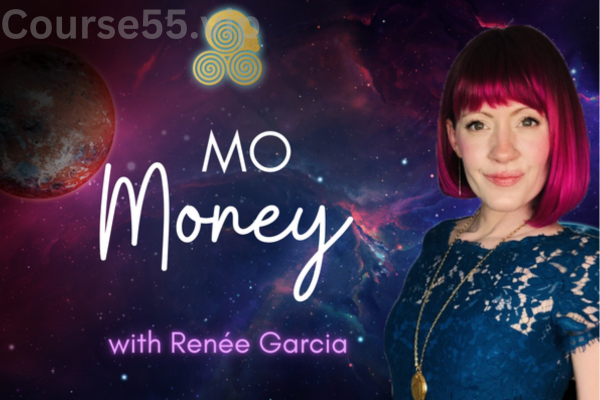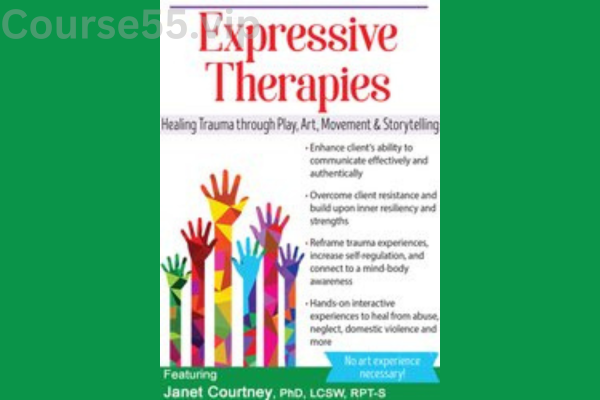-
×
 Ultimate Guide Technical Trading
1 × $23.10
Ultimate Guide Technical Trading
1 × $23.10 -
×
 Attachment Focused Therapy: Trauma Related Disorders in Children & Adolescents By Daniel Hughes - PESI
1 × $23.10
Attachment Focused Therapy: Trauma Related Disorders in Children & Adolescents By Daniel Hughes - PESI
1 × $23.10 -
×
 Intermediate To Advanced Breath-Control Course By Simon Borg-Olivier
1 × $39.00
Intermediate To Advanced Breath-Control Course By Simon Borg-Olivier
1 × $39.00 -
×
 Healthy Hormone Done-For-You By Lorene Sauro
1 × $23.10
Healthy Hormone Done-For-You By Lorene Sauro
1 × $23.10 -
×
 Carl Bretzke Bundle
1 × $46.00
Carl Bretzke Bundle
1 × $46.00 -
×
 Spartan Renko 2.0 Workshop 2017
1 × $23.10
Spartan Renko 2.0 Workshop 2017
1 × $23.10 -
×
 PTSD in Veterans: Impact of PTSD on Military Personnel and War Veterans and Their Families By Michael Gatson - PESI
1 × $23.10
PTSD in Veterans: Impact of PTSD on Military Personnel and War Veterans and Their Families By Michael Gatson - PESI
1 × $23.10 -
×
 Black Gold Strategies by Basecamptrading
1 × $23.10
Black Gold Strategies by Basecamptrading
1 × $23.10 -
×
 Treating Insomnia: Transdiagnostic Clinical Strategies to Optimize Sleep & Improve Outcomes in Clients with PTSD, Anxiety, Depression & Chronic Pain By Donn Posner - PESI
1 × $23.10
Treating Insomnia: Transdiagnostic Clinical Strategies to Optimize Sleep & Improve Outcomes in Clients with PTSD, Anxiety, Depression & Chronic Pain By Donn Posner - PESI
1 × $23.10 -
×
 Mo’ Money By Renee Garcia
1 × $23.10
Mo’ Money By Renee Garcia
1 × $23.10 -
×
 Fast Track 6 Figure Formula By Ray Higdon & Mark Hoverson
1 × $23.10
Fast Track 6 Figure Formula By Ray Higdon & Mark Hoverson
1 × $23.10 -
×
 Maine Legal and Ethical Issues for Mental Health Clinicians By Susan Lewis - PESI
1 × $23.10
Maine Legal and Ethical Issues for Mental Health Clinicians By Susan Lewis - PESI
1 × $23.10 -
×
 The Complete Crowdfunding PR System By Salvador Briggman - CrowdCrux
1 × $23.10
The Complete Crowdfunding PR System By Salvador Briggman - CrowdCrux
1 × $23.10 -
×
 Orthopedic Challenges: Expert Strategies to Avoid Harm & Enhance Healing By William Mazzocco - PESI
1 × $23.10
Orthopedic Challenges: Expert Strategies to Avoid Harm & Enhance Healing By William Mazzocco - PESI
1 × $23.10
Expressive Therapies: Healing Trauma Through Play, Art, Movement & Storytelling By Janet Courtney – PESI
$199.00 Original price was: $199.00.$23.10Current price is: $23.10.
SKU: C55vip.11105iLdymbHl
Category: Download
Tags: Art, Expressive Therapies, Healing Trauma Through Play, Janet Courtney - PESI, Movement & Storytelling
Expressive Therapies: Healing Trauma Through Play, Art, Movement, and Storytelling by Janet Courtney – Digital Download!

Expressive Therapies: Healing Trauma Through Play, Art, Movement & Storytelling By Janet Courtney – PESI
Overview

Expressive Therapies: Transforming Trauma Through Play, Art, Movement, and Narrative by Janet Courtney
In her thought-provoking book, Healing Child and Family Trauma Through Expressive and Play Therapies, Janet A. Courtney explores the profound impact of expressive therapies in helping children and families cope with trauma. By integrating creative methods such as play, art, movement, and storytelling, Courtney emphasizes how these techniques serve as powerful outlets for emotional expression and psychological recovery. This review delves into the book’s core themes, therapeutic techniques, and practical takeaways, making it an essential guide for therapists, educators, and caregivers.
Exploring Expressive Therapies
Expressive therapies encompass a variety of creative methods that enable individuals to process emotions and experiences in nonverbal ways. These methods are particularly crucial for children who may have difficulty expressing their thoughts through words. Courtney stresses that conventional verbal communication may fall short when dealing with complex trauma-related emotions. Instead, creative therapies such as art, play, movement, and storytelling offer alternative routes for emotional release.
- Art Therapy: Participating in artistic activities like drawing, painting, or sculpting allows children to visually represent their emotions. This method is especially useful for those who find it challenging to verbalize their pain or fears. Studies suggest that art therapy significantly improves emotional resilience by enabling children to identify and regulate their emotions.
- Play Therapy: Engaging in play helps children recreate scenarios that reflect their inner experiences. This intuitive form of communication offers a secure environment for them to process trauma, allowing them to act out difficult emotions in a constructive way.
- Movement Therapy: Physical movement can serve as an effective channel for releasing built-up emotions. Through physical activity, children can express themselves in a nonverbal manner and experience relief from emotional distress.
- Storytelling: Narratives provide children with a structured way to make sense of their experiences and process emotions through storytelling. This method also strengthens connections between children and caregivers, fostering meaningful discussions about feelings.
Establishing a Secure Therapeutic Setting
A fundamental aspect of effective expressive therapies, as Courtney highlights, is creating a secure and supportive therapeutic space. A nurturing environment allows children to explore their emotions without fear of criticism. This psychological safety is essential for fostering healing, as it enables children to be open and authentic in their self-expression.
Furthermore, the book underscores the significance of building trust between therapists and children. Trust serves as a critical factor in therapy success, as children are more willing to engage in expressive activities when they feel secure. Therapists can cultivate this safe environment through the following strategies:
- Active Listening: Providing children with full attention to validate their emotions.
- Empathy and Compassion: Demonstrating genuine understanding and acceptance of a child’s feelings.
- Adaptable Techniques: Modifying therapeutic strategies to accommodate each child’s individual needs and comfort levels.
By prioritizing these elements, therapists can foster a healing space that encourages children to fully engage in expressive therapies.
Blending Mindfulness with Expressive Therapies
A unique aspect of Courtney’s approach is her emphasis on integrating mindfulness techniques with expressive therapies. Mindfulness fosters an awareness of the present moment, helping children connect more deeply with their emotions and surroundings. When combined with expressive techniques, mindfulness enhances therapeutic effectiveness in several ways:
- Emotional Stability: Mindfulness techniques equip children with tools to handle overwhelming emotions, making self-expression through creative activities more accessible.
- Improved Concentration: Encouraging children to stay present can sharpen their focus during expressive exercises, enhancing the therapeutic experience.
The synergy of mindfulness and expressive therapies presents a well-rounded strategy for trauma recovery, addressing both emotional and physical healing. Research supports the claim that mindfulness significantly alleviates symptoms of anxiety and depression, reinforcing the validity of Courtney’s holistic approach.
Case Studies and Research-Based Applications
Courtney grounds her discussion in empirical research and real-life case studies, illustrating the effectiveness of expressive therapies. By showcasing practical applications, she provides compelling evidence of how creative interventions lead to positive outcomes. Each case study reinforces the concept that healing can be achieved through artistic and imaginative methods.
Illustrative Success Stories:
- Case Study A: A child who had experienced severe trauma began expressing emotions through art. Over multiple sessions, their drawings evolved from chaotic images to more structured and calming illustrations, reflecting enhanced emotional stability and trauma processing.
- Case Study B: A group of children engaged in play therapy explored themes of grief and anxiety. As they played out various scenarios, they began to openly discuss their emotions, leading to increased self-awareness and stronger group connections.
These real-world examples highlight the tangible benefits of expressive therapies, demonstrating their effectiveness in emotional healing and recovery.
Hands-On Strategies for Therapists and Caregivers
For those seeking to apply the concepts in Courtney’s book, numerous practical techniques can enhance the impact of expressive therapies. The following strategies offer engaging and supportive ways to facilitate healing:
- Art Journals: Encourage children to maintain an art journal to freely express their emotions through drawings and reflections.
- Role-Playing Activities: These exercises allow children to embody different characters or scenarios, providing a secure environment to process emotions.
- Physical Movement Breaks: Introducing movement-based activities such as stretching or dancing helps children release emotional tension and promote self-expression.
- Mindfulness Techniques: Simple mindfulness exercises, like deep breathing or guided visualization, can help children center themselves before engaging in creative therapy.
Implementing these approaches enables therapists and caregivers to create dynamic and nurturing therapeutic experiences that align with expressive therapy principles.
Final Thoughts
Janet A. Courtney’s Healing Child and Family Trauma Through Expressive and Play Therapies provides an in-depth analysis of the role expressive therapies play in trauma recovery. By integrating diverse methods such as play, art, movement, and storytelling, Courtney illustrates how these approaches offer valuable opportunities for emotional expression and healing. Her emphasis on establishing a secure therapeutic environment and incorporating mindfulness techniques further enriches the process. Packed with practical insights and supported by evidence-based research, this book serves as an invaluable tool for therapists, educators, and caregivers dedicated to supporting children affected by trauma. In a society where emotional struggles are often overlooked, expressive therapies provide a creative and empowering pathway toward healing and well-being.
Frequently Asked Questions:
Business Model Innovation: We operate a group buying strategy, allowing participants to share costs and access popular courses at reduced prices. This model benefits individuals with limited financial resources, despite concerns from content creators about distribution methods.
Legal Considerations: The legality of our operations involves complex issues. Although we don’t have explicit permission from course creators to resell their content, there are no specific resale restrictions stated at the time of purchase. This ambiguity creates an opportunity for us to provide affordable educational resources.
Quality Control: We ensure that all course materials purchased are identical to those offered directly by the creators. However, it’s important to understand that we are not official providers. As such, our offerings do not include:
– Live coaching calls or sessions with the course author.
– Access to exclusive author-controlled groups or portals.
– Membership in private forums.
– Direct email support from the author or their team.
We aim to reduce the cost barrier in education by offering these courses independently, without the premium services available through official channels. We appreciate your understanding of our unique approach.
Be the first to review “Expressive Therapies: Healing Trauma Through Play, Art, Movement & Storytelling By Janet Courtney – PESI” Cancel reply
You must be logged in to post a review.












Reviews
There are no reviews yet.